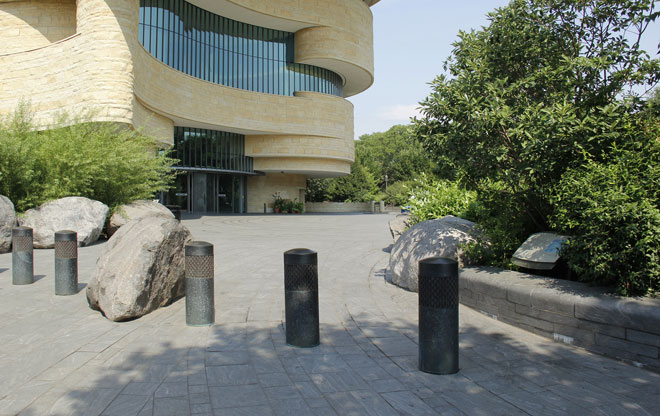
East Entry Plaza
The east entry plaza spills out onto the sidewalk along Maryland Avenue, inviting pedestrians into the grounds of the museum. The rugged native plantings, the stately forms of the grandfather rocks and curvilinear paths, and the rich materials and textures create a beautiful and dynamic setting within the more restrained landscapes and buildings of the monumental core.
Image: OLIN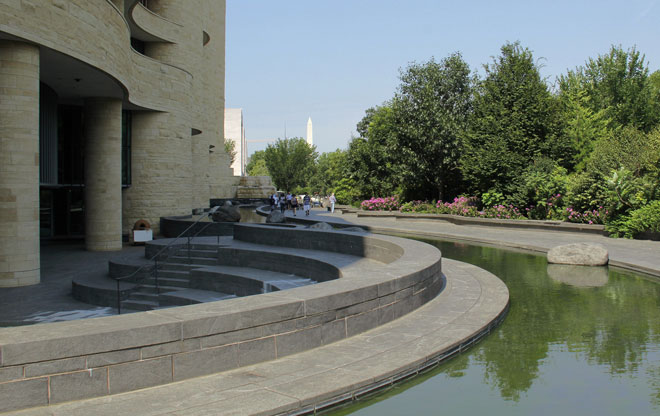
A Curving Pool
Beyond the entry plaza, the sinuous curves of the building are reflected in the forms of the landscape. A curving pool wraps the outdoor amphitheater and leads visitors around the building to the waterfall at the northwest entrance. The Upland Hardwood Forest Habitat features a beautiful range of scales of planting, with a wildflower seating edge accentuated by the rich colors and shadows of the larger shrubs and trees.
Image: OLIN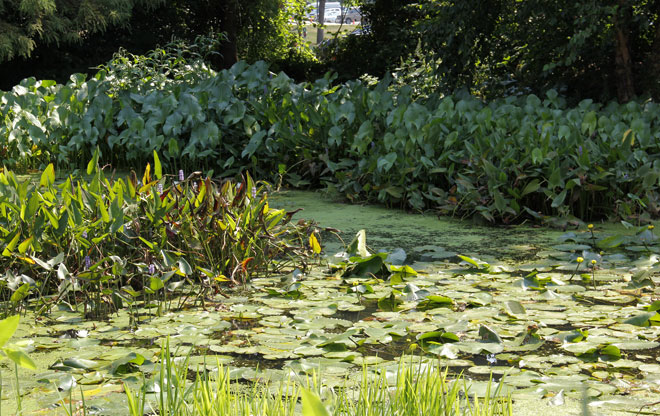
The Wetland Habitat
At the east of the museum is the Wetland Habitat, a lush aquatic landscape filled with water lilies and cattails, surrounded by trees native to freshwater wetlands including cypress, willow, river birch and paw-paw. The rich sights, smells, and sounds emphasize the idea of connection with the land. Birds and insects are abundant in and around the pond, taking advantage of this unique ecosystem on the Mall.
Image: OLIN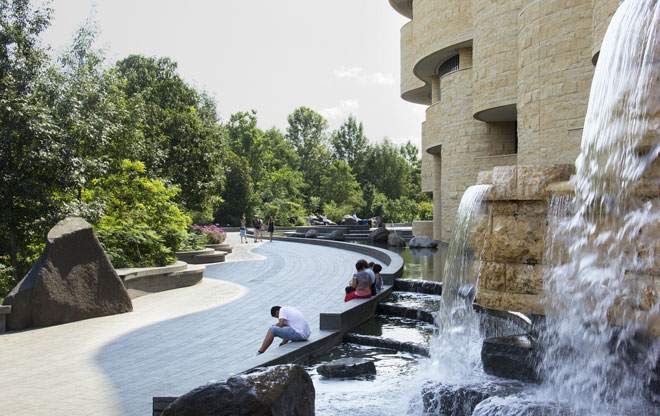
The Upland Hardwood Forest Habitat
In the Upland Hardwood Forest, curving seat walls offer a cool spot to rest beside the water in the shadow of the building. The dense forest plantings serve to screen the museum grounds from the Mall with a stunning display of regional flora containing over 30 tree species and shrubs, groundcovers, and wildflowers in their native habitat associations. The serene lines of the granite path beautifully accentuate the powerful forms of vegetation, boulders, and the waterfall.
Image: OLIN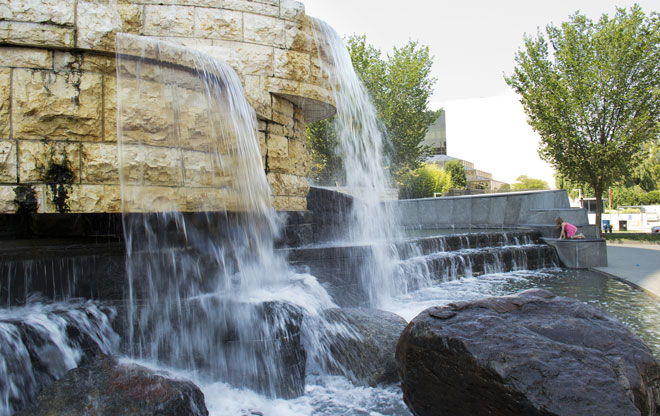
An Oasis in the City
The museum's dynamic waterfall and curving stream welcome visitors at the northwest entrance from the Mall, encouraging engagement with the water and referencing the historic Tiber Creek that once flowed through this site. Using the rich materials of Kasota limestone and granite, the waterfall is visually part of both building and the land. The fall of water masks the ambient noise and creates a cool, refreshing oasis within of the city.
Image: OLIN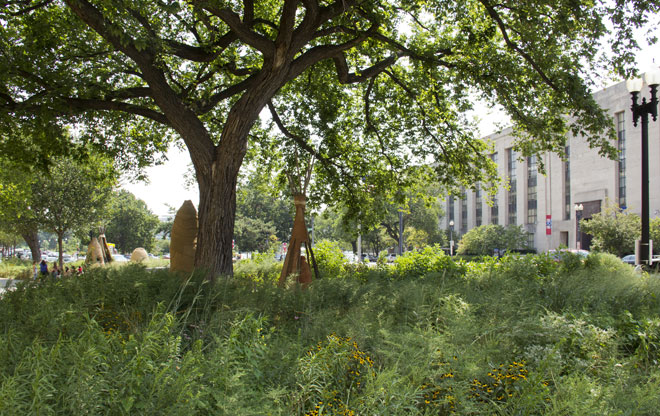
The Meadow
Native grasses create a densely planted boundary along the southern edge of the museum grounds. The scale of the meadow evokes the character of the historic piedmont hillsides and grasslands and provides a striking entrance and stage for art. Black-eyed Susans, buttercups, and other wildflowers create a colorful complement to the palette of grasses and shrubs that served as a critical source of food and medicinal plants to indigenous peoples.
Image: OLIN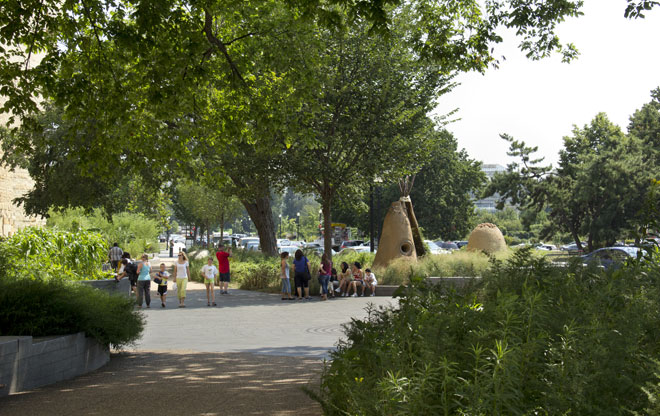
Always Becoming
The south entrance of the museum is marked by cultural and symbolic art pieces that are both permanent and temporal. The art installation, Always Becoming, is a series of sculptures created from clay and other organic materials by Nora Naranjo-Morse and is designed to erode and transform over time, responding to the weather and seasons and highlighting the constant presence of change and connection to the natural landscape.
Image: OLIN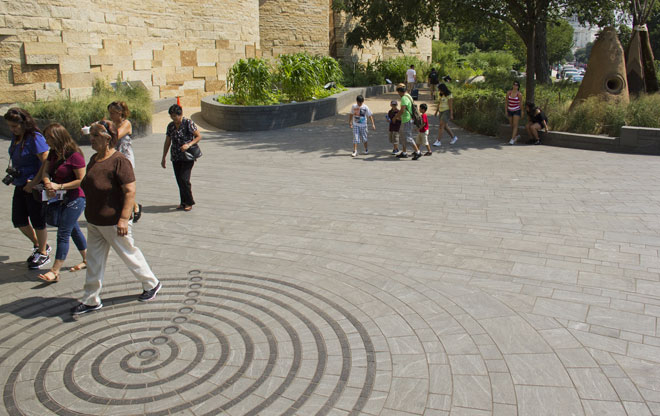
A Site Rich with Symbols
The museum grounds are rich in cultural imagery and symbolism. In the background sits one of the four cardinal stones that orient the building precisely along its north-south and east-west axes. Within the south entry plaza, a spiral moon symbol interweaves with the granite paving pattern. This symbol is reminiscent of ancient petroglyphs and signifies important patterns of lunar movement within a cyclical timeframe.
Image: OLIN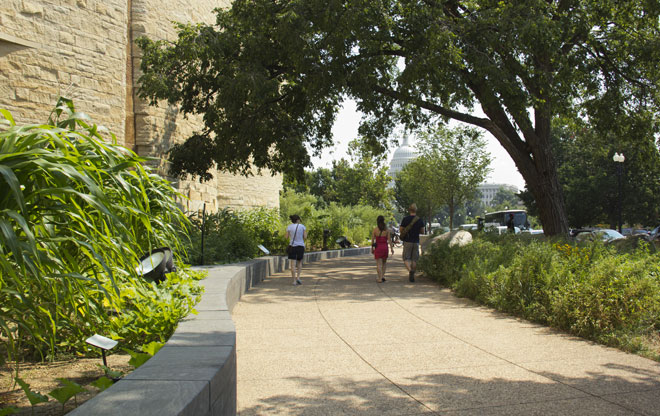
Curving Paths Visually Blend
The curving paths between meadows and croplands visually blend the plantings areas together to evoke the illusion of moving through a larger landscape. The appearance of the grasses and food crops change dramatically throughout the year, emphasizing the dynamic seasonal nature and connections to the natural landscape that makes this site a unique experience on the Mall.
Image: OLIN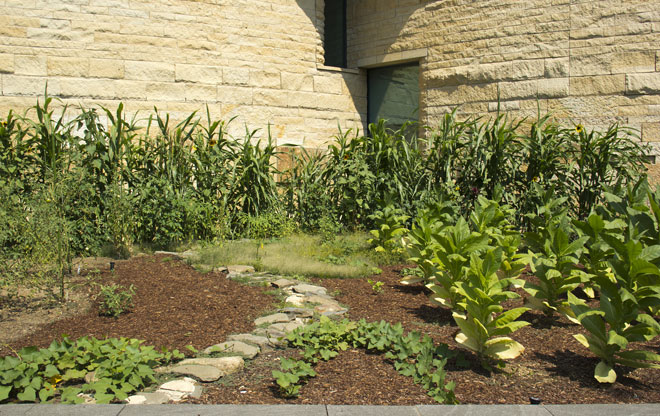
The Croplands Habitat
The Croplands Habitat showcases both indigenous culture and agriculture. Corn, beans, and squash were staple crops known as the “Three Sisters,” because of the way they grow in mutually beneficial association, providing structure, nitrogen, and moisture retention for each other. Each year begins with a spring planting that matures over the seasons to remind visitors of our historic connections to native agriculture and the relationship between the land and the food we enjoy.
Image: OLIN